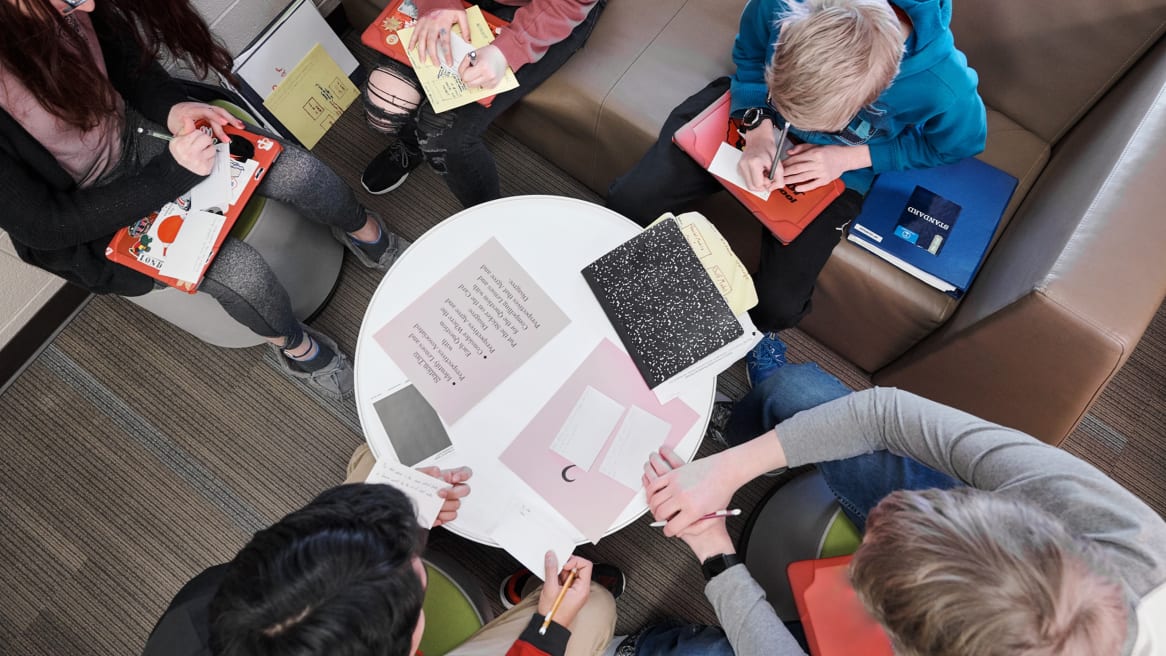Mentor Schools: Space to Learn New Ways to Teach
How an innovative professional development program lets teachers practice how they teach.
“We’ve been encouraged to get out of our comfort zones and reevaluate how we teach. Before, I never would have thought I’d want couches and ottomans in my classroom. But now I’m excited about the opportunities they create,” reports Jaclyn Nemes, an economics and financial literacy teacher at Mentor High School in Mentor, Ohio, a Cleveland suburb.
She’s describing the impact of an innovative professional development program designed to inspire new ways of teaching to better meet the needs of the more than 7,700 students in this public school district. The transformation underway at Mentor is centered on exploring and embracing new pedagogies. But leaders also realized that success would require new spaces, new furniture and new technologies, and that teachers would benefit from learning, practicing and experimenting with how to use these new resources effectively. As a result, supported by a state grant and close collaboration with Steelcase, Mentor developed an ambitious facilities upgrade plan that included renovated classrooms as well as a new professional development center.
Inside this innovative facility, teachers are reimagining their traditional role as content deliverers and discovering ways to bring more active, project-based learning into their classrooms.
These days you’ll rarely see teachers like Nemes stationed at the front of the classroom delivering a lesson. Instead, she’s likely to be walking around, supporting students as they work through assignments at their own pace. Some may be perched on storage ottomans and delving individually into an aspect of personal finance using their laptop computers. Alternatively, small groups may be huddled around whiteboards, collaborating on the financial viability of rehabbing a rundown Mentor building for mixed-use real estate. Whatever the project, it’s likely to be relevant to students’ lives and centered on active problem-solving versus spoon-fed information.
These new active approaches are implicit in the district’s mission: Inspiring students today to reach their potential tomorrow. “We’re trying to change the way that our teachers teach and our students learn because we need to make them ready for what lies beyond high school,” explains Mike Lynch, director of innovation and instructional technology. “We know that out in the world, you don’t get fed information — that’s not how things work”.
“Education can no longer be about just measuring kids’ understanding of content,” he continues. “It’s about how well can they collaborate and communicate. How good are they at critical thinking. Have we allowed them to be creative? If they can’t express what they’ve learned in their own way, they’re going to struggle.”
Paradigm Center: Where Teachers Practice How They Teach
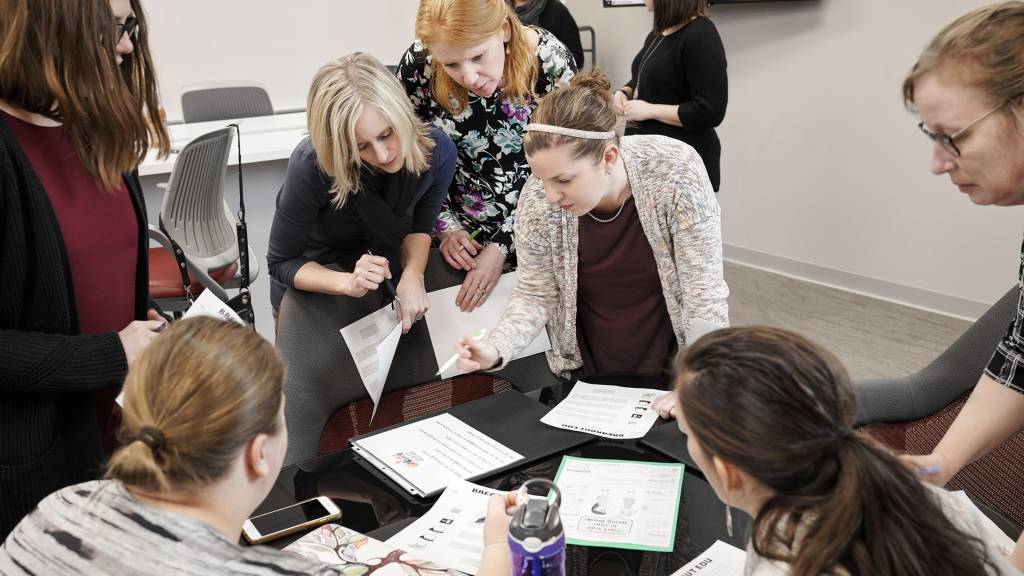
Adjoining Mentor’s high school is a new 16,000-square-foot professional development center called Paradigm. Designed to be multipurpose and multiuse, it’s a place where teachers, staff, students and members of the community can experience firsthand the benefits of flexible and inviting environments for learning and collaborating.
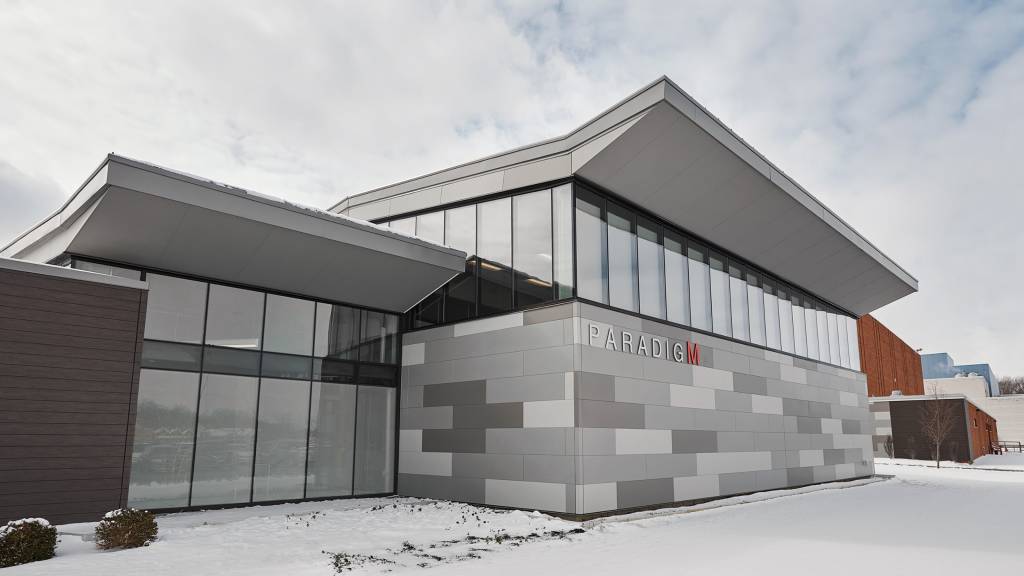
On any given day, 20-30 district teachers are here for professional development, learning and experimenting with the strategies and tools of active learning. Definitely not a passive, “sit and get” type of learning, teachers are instead situated in the same types of flexible spaces and using the same technologies that they’re being encouraged to optimize in their classrooms. “At Paradigm, teachers have the time and opportunity to apply the content they’re learning, to make it their own and use it in a creative way in a space that is supportive and flexible,” reports Lynch.
In addition, Paradigm is a workplace for Mentor’s administrative staff and a meeting place for the school board, parent organizations, booster clubs and other school-related groups. It’s available to school districts beyond Mentor for their own professional development programs, and local businesspeople also can come here for meetings or events, large or small. Rooms can be easily scaled up or down with dividers to meet a variety of groups and needs, and nearby breakout rooms provide another choice for individuals or small groups.
Renovated Classrooms: Choices, Comfort & Flexibility
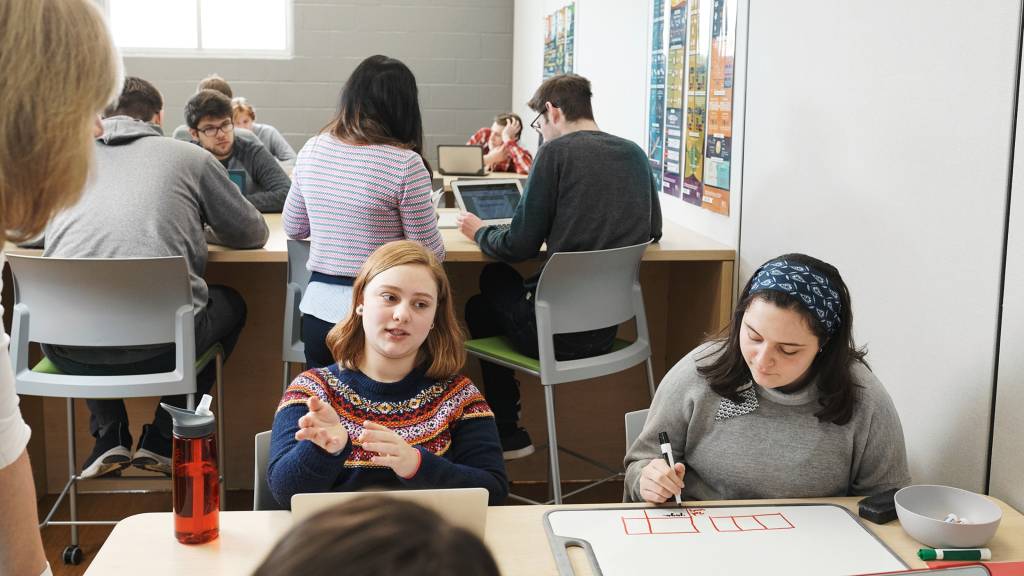
Mentor is mid-way through a plan to renovate the classrooms in all 10 schools in the district. “Essentially, every single space in the Mentor Schools K-12 will have been evaluated and renovated to promote active learning as a major emphasis,” says Lynch.
Redoing 65 classrooms in the high school was a priority, and the results have been dramatic. “Before, when kids walked into our high school classrooms, they had one choice: ‘Which hard desk do I sit at?’ About 80-90 percent of our classrooms were set up in the same way — rows of desks,” recalls Lynch. “We knew we needed to increase physical comfort. We also wanted to provide every teacher with at least three types of seating in their classrooms, so students would have choices. After all, who says students can’t be comfortable and learn at the same time?”
Flexibility was another important consideration. Soft chairs, couches, ottomans and moveable chairs and tables are now classroom norms. And many no longer have a stationary teacher’s desk. Instead, teachers move around to all areas of the room, rotating among individuals and groups at work. Whiteboards abound, and teachers and students frequently share content from their laptop computers by projecting it unto monitors. The district gives a laptop to every student and every teacher to use throughout the school year.
“In every way, we wanted to make sure the classroom environment totally supported the process of learning,” emphasizes Lynch. To achieve that, he explains, instead of expecting all students to learn the same thing at the same time in the same way, teachers need the ability to divide their class quickly into different learning stations. “Maybe one group is at a technology station, working with content the teacher has previously posted. Others are maybe watching a video about the topic. At the same time, the teacher can be working personally with small groups of students at other stations in the room.”
“There are so many ways to engage students that keep them moving and collaborating and thinking deeply,” concurs Tracy Coleman, an advanced placement English teacher. “Our classrooms now not only invite collaboration, but they actually require kids to be face-to-face and communicate with one each other in a very natural way. There’s no more getting up and sliding heavy desks. Kids walk in and there’s already a sense that we’re in this together, operating not only as individuals but also to understand different viewpoints and learn from each other. The result is a beautiful potpourri of ideas and perspectives. Even when they disagree, students are learning how differing perspectives on a topic can deepen their own understanding of it.”
Assessing Experiences
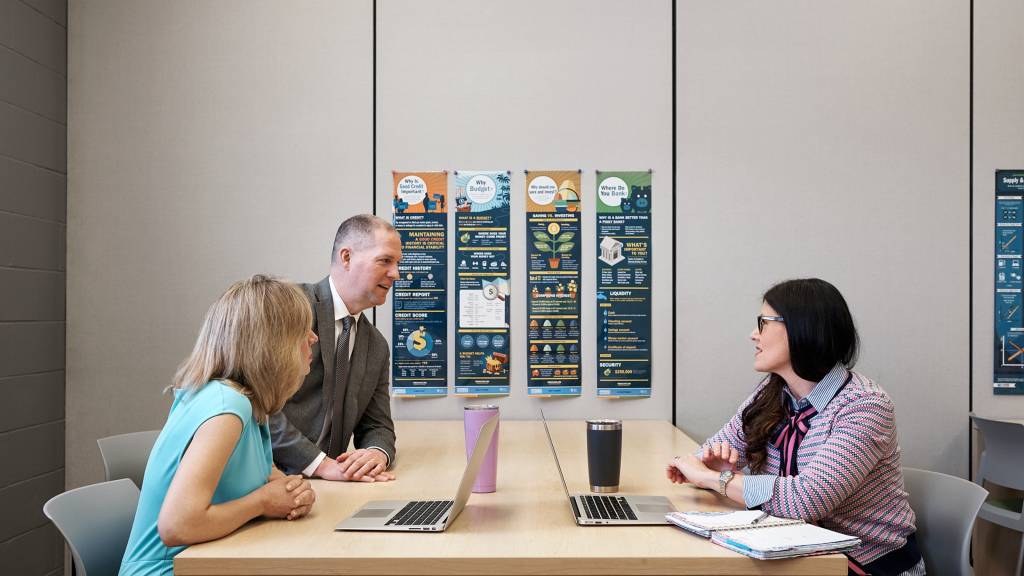
One of the challenges of education is measuring success, observes Lynch. “Anytime you’re dealing with human beings, you’re dealing with a lot of variables. We’re a high-performing district, but state assessments are just one measure. I’d say the best indication of our success is just walking around, observing and talking with people. You’ll find that teachers and students generally feel better about the opportunities and spaces that they now get to work in, and they’re taking advantage of the technology we have as a district.”
Another indicator that Mentor is on the right track: Hundreds of visitors have come from all over Ohio and nearby Pennsylvania to see how teaching and learning are happening here. They arrive curious and leave inspired, having seen firsthand just how much progressive learning environments can positively affect both students and their teachers.


